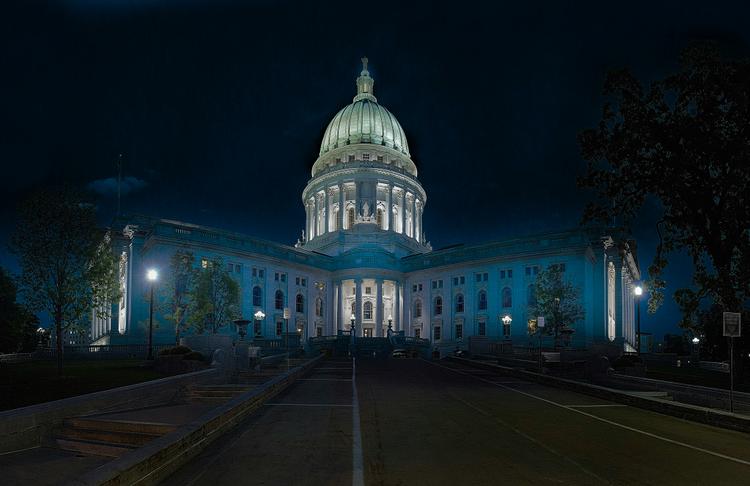
M-21-31 Logging Compliance Challenges and How to Overcome Them
In today’s rapidly evolving cybersecurity landscape, federal agencies must stay ahead of emerging threats while ensuring compliance with stringent security mandates. One such critical directive is OMB Memorandum M-21-31, which outlines event logging requirements to improve the U.S. government's ability to detect, investigate, and respond to cyber incidents.
Introduction
In an effort to strengthen federal cybersecurity practices, the Office of Management and Budget (OMB) issued Memorandum M-21-31 in August 2021. Titled Improving the Federal Government's Investigative and Remediation Capabilities Related to Cybersecurity Incidents, this memorandum establishes new logging requirements that agencies must implement to improve incident detection, investigation, and remediation efforts.
Despite the clear intent behind M-21-31, many federal agencies face significant challenges in achieving compliance. From technological limitations and resource constraints to managing massive data volumes, agencies must overcome several hurdles to meet the memorandum’s stringent requirements. In this article, we’ll explore the core challenges associated with M-21-31 compliance and discuss practical strategies for overcoming them.
Understanding M-21-31 Compliance Requirements
M-21-31 defines a tiered event logging maturity model that federal agencies must follow. These tiers determine the level of logging effectiveness and dictate how agencies should handle logs:
EL0 (Not Effective) – Logging requirements of the highest criticality are either not met or only partially met.
EL1 (Basic) – Logging requirements of the highest criticality are met.
EL2 (Intermediate) – Logging requirements of both highest and intermediate criticality are met.
EL3 (Advanced) – Logging requirements at all criticality levels are met.
The memorandum outlines specific log retention periods, the types of logs to be collected, and the level of detail required to support cybersecurity operations. Federal agencies are expected to progress through these tiers to enhance their security posture over time.
The Key Challenges in Achieving M-21-31 Compliance
1. Technological Limitations
Many agencies operate legacy systems that lack the capability for granular logging, which is essential for M-21-31 compliance. These outdated systems may not generate the required logs or integrate effectively with modern security tools. The inability to capture sufficient logging data can hinder forensic investigations and cybersecurity response efforts.
Additionally, effective logging plays a crucial role in overall cybersecurity observability. Understanding how different security components interact and detecting potential vulnerabilities requires a robust observability strategy. Agencies looking to enhance their security posture should consider exploring observability in cybersecurity to improve their monitoring and threat detection capabilities.
2. Resource Constraints
Compliance with M-21-31 requires substantial investments in hardware, software, and personnel training. However, many agencies operate within strict budget constraints, making it difficult to allocate funds for logging upgrades. Additionally, the cybersecurity talent shortage exacerbates the problem, as agencies struggle to find qualified professionals to manage and analyze log data effectively.
3. Data Volume and Storage Challenges
The volume of log data generated by federal systems is immense. Agencies must store logs securely while ensuring they remain easily accessible for analysis. Balancing long-term storage costs with the need for high availability is a major challenge. Inadequate storage infrastructure can lead to delays in cybersecurity investigations or even non-compliance.
4. Integration with Cloud and Modern Architectures
As federal agencies transition to cloud-based and containerized environments, logging becomes increasingly complex. Containers, for example, have ephemeral lifecycles, leading to constantly changing IP addresses and transient logs. Ensuring that cloud and containerized workloads comply with M-21-31 requires advanced security solutions that can handle the dynamic nature of modern IT environments.
Strategies for Overcoming Compliance Challenges
1. Modernizing IT Infrastructure
Agencies must prioritize upgrading outdated IT systems to ensure comprehensive logging capabilities. Modern security information and event management (SIEM) platforms and log management tools should be integrated into agency networks to meet M-21-31’s requirements. Investing in automation tools can also help streamline log collection and analysis.
2. Leveraging Advanced Security Technologies
Artificial intelligence (AI)-driven threat detection, automated incident response solutions, and advanced analytics tools can enhance log management and monitoring. These technologies can help agencies process large volumes of data efficiently, identify anomalies, and generate real-time alerts for potential cybersecurity threats.
3. Implementing Cost-Effective Log Management Solutions
One cost-effective approach is adopting cloud-based log storage solutions. Cloud object storage with lifecycle policies can provide scalable, long-term log retention at a lower cost compared to traditional on-premises solutions. Additionally, agencies should consider open-source log management platforms to reduce dependency on expensive vendor-specific solutions.
4. Prioritizing High-Value Logs
Since storing every log indefinitely is impractical, agencies should prioritize logs based on criticality. High-value logs include:
Identity and access management events
Operating system logs
Network traffic logs
Security tool alerts By focusing on these logs, agencies can optimize their compliance efforts without overwhelming their storage and analysis capabilities.
Conclusion
Achieving M-21-31 compliance is a complex but essential goal for federal agencies striving to enhance their cybersecurity posture. Understanding the memorandum’s requirements, addressing key challenges, and implementing strategic solutions will help agencies improve their investigative and remediation capabilities.
M-21-31 compliance aligns closely with broader federal cybersecurity initiatives, such as those outlined in the Biden Cybersecurity Executive Order, which also emphasizes the importance of logging, incident detection, and response enhancements.
Learn how leveraging Observability can enhance log management and monitoring capabilities, ensuring agencies can effectively analyze and respond to security threats. By proactively addressing compliance challenges, federal agencies can strengthen their security frameworks and better protect national assets from cyber threats.